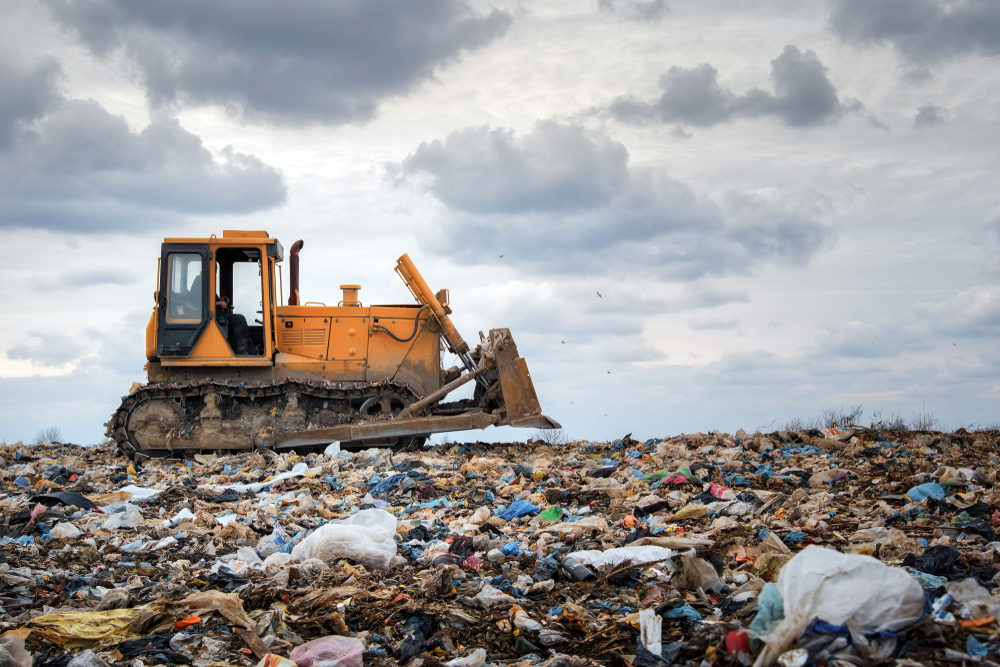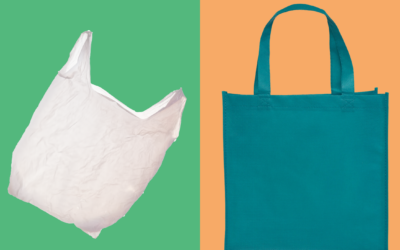In the United States, each person produces 4.9 pounds of waste per day. Collectively, that amounts to 292.4 million tons. Out of that, 50% or 146 million tons, goes to landfills. That’s a gargantuan number to wrap one’s head around. And by the time you’ve wrapped your head around it, more waste is produced, including candy wrappers, chip bags, and other plastic trash that take decades to decompose.
Landfills, although necessary, are bad news. For starters, they worsen pollution and cause an array of health complications due to the toxins and leachate they create. The decomposing waste they contain also produces copious amounts of greenhouse gases, which exacerbate global warming.
As such, organizations, corporations, and communities worldwide are pushing the Zero Waste to Landfill movement. The goal is to minimize the amount of waste that ends up in landfill sites, reducing the impact of these dumpsites on our environment.
If you want to learn more about landfills, then you’ve come to the right place. In this article, Oceos Packaging details how landfills work and how they contribute to global warming, as well as other relevant facts.
What is a landfill?
First things first: let’s define landfills – also called dumps – in the past. Landfills are places used to store disposable materials and wastes. These sites are located, designed, and operated to ensure compliance with federal safety standards and protocols.
Despite stringent regulations, landfills inherently still pose risks to communities and the environment. These include pollution, contamination, and contagion that threaten public and environmental health.
How many landfills are in the U.S.?
As of 2021, the U.S. has 10,000 closed landfills and over 3,000 active ones. The state of Nevada deposits the most waste in landfills at 38.4 tons of trash per capita. Meanwhile, Idaho state contributes the least to landfill waste at 4.1 tons of trash per capita.
How do landfills work?
Landfills of the past were literal dumps, insubstantially regulated, if at all. By contrast, modern landfills seek to temper risks. They’re engineered to isolate the waste using a layering system, which prevents byproducts and leaks from seeping into the environment.
Modern landfill sites are built with the following layers:
- Cells – Cells are the layer where the compression of waste happens. Each cell uses a liner that prevents its contents from leaking into adjacent cells while containing odors and preventing unwanted pests. Bulldozers and other heavy machinery compress the trash and cover the cell with soil once it’s full.
- Liner system – This separates trash and its byproducts from groundwater and the rest of the environment. Landfills use either plastic liners, compact clay liners, or a combination of those systems.
- Drainage system – This component filters out the water collected from snow, rain, and liquids produced by trash, called leachate. Snow and rainwater travel through a pipe system that ends in ditches surrounding the landfill. From there, they go to collection ponds for processing and are then released off-site, back into the environment. Leachate follows a similar system of collection, treatment, and release.
- Gas collection system – Pipes and extraction wells transfer gases produced in landfills to treatment areas where they are vented or converted to energy.
Landfills come in three types to segregate the different kinds of waste. They are municipal solid waste (MSW) landfills, construction and demolition (C&D) landfills, and hazardous waste landfills.
What happens to trash in landfills?
Waste that goes into landfills is compacted using heavy machinery, such as a bulldozer. This is done so they take up less room, maximizing the real estate of the landfill site. Landfill cells get a 6-inch layer of dirt that acts as a cover before going through another round of compaction. The dirt covering controls infestation and odor leakage.
Some modern landfills have systems that allow them to convert the collected gas into energy. This energy generation model is just one of the ways landfills today are becoming more sustainable.
What happens when landfills are full?
Not all trash reaches landfills. Some end up as ocean plastic pollution, for example. In fact, islands of trash float across the open sea. But even with those wayward waste, landfills still tend to fill up quite quickly.
Once they do, they are capped with a plastic liner and covered with soil by at least 2 feet. Vegetation is then planted on top to prevent soil erosion and maximize land use. Authorities monitor the area for 30 years after capping to ensure safety from contamination.
It’s a common practice for landfills to be turned into community parks, as long as authorities have ensured that the area is not a threat to the environment. The most famous of these projects is Mount Trashmore in Virginia Beach. The 165-hectare capped landfill houses playgrounds, trekking paths, man-made lakes, and mountains.
How do landfills contribute to global warming?
Modern engineering can’t entirely erase the negative effects landfills have on the environment. Here, the most obvious is how they contribute to global warming, no thanks to the methane gas and carbon dioxide released by decomposing waste.
Methane gas absorbs the sun’s heat more notoriously compared to carbon dioxide. That is arguably the reason why livestock farming contributes more to global warming than automobiles.
On top of methane gas, landfill sites also produce carbon dioxide, hydrogen, nitrogen, and other organic compounds. These are greenhouse gases that exacerbate global warming.
The detrimental effects of landfills extend beyond global warming, too. There’s the destruction of natural habitats for wildlife to make space for waste storage, which usually eats up as much as 600 acres. Landfills also pose social impacts, such as the value depreciation of nearby properties.
Reduce Your Waste
Given the environmental impact of landfills, we must act collectively to reduce the amount of waste that ends up at these sites. It’s our communal responsibility to be conscious of the waste we produce.
This means going beyond consciousness and becoming more active in pursuing our common goal—that is, waste cutback. If you can pursue a zero-waste lifestyle, even better. You can achieve that by committing to the 5 Rs: reduce, reuse, repair, rot, and recycle.
But remember, waste accountability doesn’t fall exclusively upon individuals. Businesses are just as liable for the problem – if not more – since they are the biggest consumers of resources and thus the largest producers of waste.
If you’re a retailer or a business owner, it’s high time to get behind sustainability. One of the easiest ways to minimize waste generation as a corporation is by banning the use of single-use plastics. Check out Oceos’ custom reusable shopping bags to get you started.
We offer reusable tote bags made from recycled PET bottles, hemp, jute, and other sustainable materials that let you forgo single-use grocery bags. Contact us today to get an estimate.




